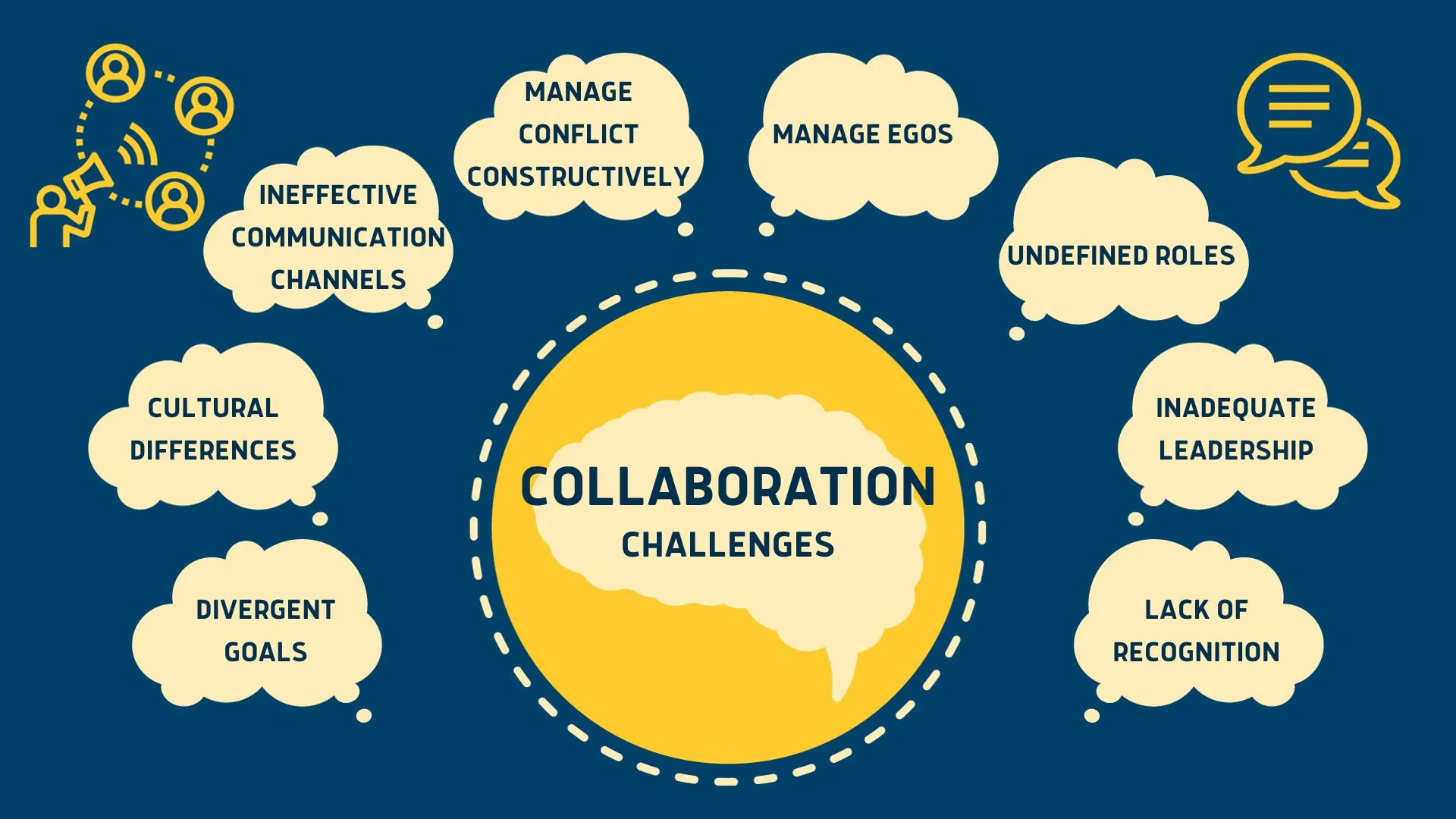In today's dynamic and complex business environment, traditional hierarchical leadership models are increasingly being replaced by more collaborative approaches. Collaborative leadership emphasizes the power of collective effort, where leaders work together with their teams, leveraging diverse skills and perspectives to achieve shared goals. This leadership style has proven to be highly effective in driving performance excellence, fostering innovation, and creating a more inclusive and engaged workforce.
Understanding Collaborative Leadership
Collaborative leadership is a management practice where leaders work together with their teams and other stakeholders, sharing decision-making processes and responsibilities. It involves fostering an environment of trust, open communication, and mutual respect, where every team member feels valued and empowered to contribute to the organization's success.
Key Characteristics of Collaborative Leadership
- Shared Vision and Goals: Collaborative leaders ensure that the team has a clear understanding of the common objectives and goals. This shared vision aligns everyone's efforts and fosters a sense of purpose and direction.
- Open Communication: Effective communication is the cornerstone of collaborative leadership. Leaders encourage transparency, active listening, and the free exchange of ideas, which helps in building trust and fostering a collaborative culture.
- Empowerment and Trust: Collaborative leaders trust their team members and empower them to take ownership of their tasks. This involves delegating responsibilities and providing the necessary resources and support to enable team members to succeed.
- Diversity and Inclusion: Embracing diverse perspectives and fostering an inclusive environment is crucial for collaborative leadership. It encourages creativity and innovation by bringing together different viewpoints and experiences.
- Collective Decision-Making: Instead of a top-down approach, collaborative leaders involve their teams in the decision-making process. This not only improves the quality of decisions but also increases the team's commitment to implementing them.
- Conflict Resolution: Collaborative leaders are skilled in managing conflicts constructively. They encourage open discussion and help find mutually beneficial solutions, maintaining a positive and productive team dynamic.
The Impact of Collaborative Leadership on Performance Excellence

Collaborative leadership has a profound impact on an organization's performance. Here are some ways in which it drives performance excellence:
Enhanced Innovation and Creativity
By fostering an environment where diverse ideas are encouraged and valued, collaborative leadership promotes innovation and creativity. Team members feel more comfortable sharing their unique perspectives and proposing new solutions, leading to more innovative outcomes. This is particularly important in industries where staying ahead of the competition requires constant innovation.
Increased Engagement and Motivation
When team members feel that their contributions are valued and that they have a say in decision-making, their engagement and motivation levels increase. Collaborative leadership creates a sense of ownership and accountability, leading to higher job satisfaction and productivity. Engaged employees are more likely to go above and beyond in their roles, driving performance excellence.
Improved Problem-Solving
Collaborative leadership leverages the collective intelligence of the team to solve complex problems. By involving diverse perspectives, leaders can identify potential issues earlier and develop more effective solutions. This collaborative approach to problem-solving enhances the team's ability to navigate challenges and achieve superior results.
Better Adaptability and Agility
In today's fast-paced business environment, organizations need to be agile and adaptable. Collaborative leadership enables teams to respond quickly to changing circumstances by fostering a culture of flexibility and continuous improvement. Teams are better equipped to pivot and innovate in response to new opportunities and challenges.
Stronger Organizational Culture
A collaborative leadership style contributes to a positive organizational culture where trust, respect, and mutual support are paramount. This strong culture enhances team cohesion and loyalty, reducing turnover rates and attracting top talent. A positive culture also improves overall organizational performance and resilience.
Enhanced Customer Satisfaction
Collaboration within teams often extends to collaboration with customers and other external stakeholders. By involving customers in the development and improvement of products and services, organizations can better meet their needs and expectations. This customer-centric approach leads to higher customer satisfaction and loyalty, which are critical for long-term success.
Implementing Collaborative Leadership in Organizations

To successfully implement collaborative leadership, organizations need to adopt specific strategies and practices:
Leadership Development Programs
Organizations should invest in leadership development programs that emphasize collaborative skills. Training leaders in effective communication, conflict resolution, and team-building can help foster a collaborative leadership culture.
Establishing Collaborative Structures
Creating structures and processes that facilitate collaboration is essential. This includes cross-functional teams, collaborative workspaces, and technologies that support seamless communication and information sharing.
Encouraging a Culture of Feedback
Feedback is crucial for continuous improvement. Encouraging a culture where team members can provide and receive constructive feedback helps identify areas for improvement and fosters a growth mindset.
Recognizing and Rewarding Collaboration
Organizations should recognize and reward collaborative behaviors. This can include formal recognition programs, performance incentives, and highlighting collaborative successes in company communications.
Promoting Diversity and Inclusion
Fostering a diverse and inclusive environment is fundamental to collaborative leadership. Organizations should implement policies and practices that promote diversity in hiring, development, and decision-making processes.
Leading by Example
Leaders should model collaborative behaviors. By demonstrating openness, transparency, and respect, leaders set the tone for the rest of the organization and encourage others to follow suit.
Challenges and Solutions in Collaborative Leadership

While collaborative leadership offers numerous benefits, it also comes with challenges. Understanding and addressing these challenges is crucial for successful implementation:
Balancing Collaboration and Decision-Making Speed
Collaboration can sometimes slow down decision-making processes. To address this, leaders should establish clear guidelines for when collaboration is essential and when more directive approaches are needed.
Managing Conflicts
Collaboration can lead to conflicts due to differing opinions and perspectives. Leaders need to be skilled in conflict resolution and create an environment where conflicts can be addressed constructively.
Ensuring Accountability
In a collaborative environment, accountability can sometimes be diffused. Leaders should ensure that roles and responsibilities are clearly defined and that there are mechanisms in place to track progress and hold team members accountable.
Overcoming Resistance to Change
Implementing collaborative leadership may face resistance from those accustomed to traditional hierarchical models. Leaders should communicate the benefits of collaboration, involve stakeholders in the change process, and provide support during the transition.
Conclusion
Collaborative leadership is a powerful approach that drives performance excellence by leveraging the collective intelligence and diverse perspectives of teams. By fostering an environment of trust, open communication, and mutual respect, collaborative leaders can enhance innovation, engagement, problem-solving, and adaptability within their organizations. While challenges exist, they can be addressed through strategic practices and a commitment to fostering a collaborative culture. As organizations continue to navigate the complexities of the modern business landscape, collaborative leadership will be essential for achieving sustainable success and performance excellence.

